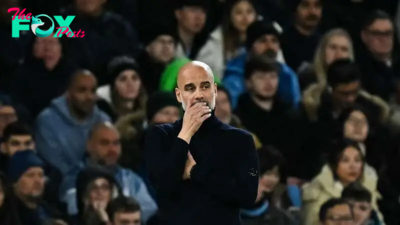Football
Premier League transfer swaps explained: Why Chelsea, Aston Villa and more are selling players to each other
A sport that has long feared the creep of Americanization might just need to give up the battle. Because like Week 10 of the NFL regular season or the days leading up to the NBA's All Star Break, trading season is alive and well.
The last few days have seen Aston Villa, Chelsea, Juventus, Tottenham, Everton, Leeds and a host of other clubs carry out what have all the look of swap deals, giving up a player of their own while getting back another (or perhaps more) in exchange. Crucially, however, this is not the same as the sort of deals we are familiar with in US sports. When Tottenham and Leeds agreed on Tuesday morning to swap Archie Gray and Joe Rodon they did not do so in one discrete transaction, sweetened for the latter with £30 million.
Instead Gray, one of the most highly-rated young midfielders in England, joined Tottenham in a £40 million deal, signing a six year contract. At the same time but in a separate deal Rodon, a key figure on loan at Elland Road last season, arrived at Leeds for £10 million, signing up to join the Yorkshire side until 2028. Arguably as recently as a few months' ago, the sheer mechanics of this deal would have grabbed headlines. Now it is de rigueur, the same sort of approach that has taken Ian Maatsen to Aston Villa, Douglas Luiz to Juventus and have had several less heralded academy graduates flying around the Premier League for what seem like sizeable fees.
There is no suggestion that the clubs involved in these deals have breached any league or UEFA swap deal rules, but they all reached something of a crescendo before the 'unofficial transfer deadline' that was June 30, for many clubs the final day of their accounting year.
Why weren't swap deals more common before?
It is, however, an intriguing new facet to the football transfer market. Serie A was often a prime mover in the swaps market -- most famously when Inter got €40 million and Samuel Eto'o for sending Zlatan Ibrahimovic to Barcelona -- but the rest of the game often found such deals altogether too difficult to execute.
That is understandable. It takes the will of a lot of parties to complete a football transaction. There needs to be a buying club with the funds to facilitate a deal, a selling side ready to do business and a player who is ready to uproot himself. Double the players in the deal means double the valuations, double the doubters who need to be won over and just as much time pressure to get a deal across the line.
Of course, simply registering these as two separate transactions doesn't actually solve any of the issues mentioned above. What has changed is the pressure on clubs to get the deals done. Where once they might have haggled over a few million here or there, now they faced pressure to get those deals on the balance sheet.
Unofficial deadline day
Whether all of these deals were made with an eye on PSR and FFP regulations (the former part of the Premier League's financial framework, the latter UEFA's) may well be a matter for some debate. What is clear, however, is that many of those non-swaps were made between clubs who were said to be under the most pressure to fulfil their PSR commitments -- which limit clubs to £105 million losses over a three year cycle -- ahead of the end of their accounting years on June 30.
Chelsea and Aston Villa, for instance, both expressed confidence over recent months that they would avoid any sanctions from the Premier League after several years of making sizeable losses. On June 28 Chelsea sold Maatsen to Aston Villa for £37.5 million. The next day they signed Omari Kellyman, a 19 year old with six first team appearances to his name, for £19 million.
When the clubs come to publish their accounts for the 2023-24 cycle, which ends on June 30 for both sides, Chelsea will be able to book £37.5 million of pure profit from the sale of academy graduate Maatsen. Given that Kellyman cost Villa a reported £600,000 when they signed him from Derby County 12 months ago the financial outlook on his sale will look similarly encouraging.
Meanwhile only a tiny fraction of the purchase price of the two players will be on the 2023-24 books. Football clubs amortize the transfer fees they pay, a standard accounting practice in which the cost of a player is spread across the length of his contract, though last year Premier League clubs agreed to limit the amortization costs to a five year spread following a rash of signings made by Chelsea where fees were spread over six, seven or more years.
Kellyman, for instance, will cost the Blues roughly £4.8 million a year in amortization charges. For the few days of the 2023-24 financial year where he was a Chelsea player, his book cost will be minimal, certainly when compared to the fee that the club have just added to their coffers for Maatsen. It is easy to see how such transfers would aid a club's financial situation ahead of a looming accounting deadline.
Much the same was true of deals such as that which took Tim Iroegbunam from Villa to Everton for £9 million, Lewis Dobbin heading in the opposite direction for £10 million. The action is not confined to the Premier League either. Villa sold Douglas Luiz to Juventus for €50 million, announcing the next day that they had signed Samuel Iling-Junior and Enzo Barrenechea for €22 million. The deals are also rolling on into July, though it is believed that Leicester City and Chelsea will be able to log in their 2023-24 accounts the transfers of Kiernan Dewsbury-Hall to Stamford Bridge and Michael Holding to King Power, the deals having been agreed on Sunday, June 30 before being announced the following Tuesday.
What has been the response to this?
There is nothing within these deals outlined above that necessarily suggests that any rules have been broken. The Premier League wrote to clubs last week informing clubs that money would have to be returned if they judged the price of any transfer to be artificially inflated.
The challenge, of course, is judging whether that is the case. Chelsea are instructive in that regard. The initial £40 million they paid 10 months ago for Cole Palmer might have seemed a figure out of whack for a player with six goals and 41 games in a Manchester City shirt. Now an offer of double that fee would surely be dismissed without hesitation at Stamford Bridge. For much more than half a decade, the wealthiest clubs in the sport have paid a premium for young talent.
It is worth noting that the consequences of being found to have wilfully iNFLated transfer fees could be severe. The Prisma investigation into Italian clubs found documentary evidence of "excessive use [of] artificial plusvalenza (capital gains, in this case increasing the sale price of a player" at Juventus. The Italian giants were docked 10 points in May 2023 and excluded from European comPetition.
Will these swap deals help?
Despite the reported dissatisfaction of some Premier League clubs over what they see as a loophole to PSR regulations, there are other factors to consider. Clubs might be able to spread the cost of their incoming transfers over four or five years, but they do have to be paid, no matter the accounting practices. This is a significant factor that CBS Sports analyzed with regards to Chelsea in March. Going into this summer the Blues figured to have £160 million of amortization costs on their books. With 23 players contracted to 2028 or beyond those costs do not dissipate as quickly as they might at other clubs. That leaves less wiggle room in the years to come.
Indeed there are financial experts who predict that the likes of Chelsea and Aston Villa may be under PSR pressure next season too. Swap deals ease the immediate pressure but only by adding to longer term cost bases. At a time when the rate of growth in broadcast revenues is expected to slow, that is a significant concern.
What might just matter most of all is whether all these swap deals make a team better on the pitch -- there are few better revenue drivers than on field success that drives interest, sponsorship and qualification to lucrative European competitions. If Maatsen proves to be the high grade Premier League left back that he looked to be on loan at Borussia Dortmund, then the annual book cost -- roughly £6.25 million of fee amortization plus significant wages -- would look like a price well worth paying. If a clutch of £5 million amortized fees for fringe youngsters and prospects limits another club's maneuverability in the years to come, then a potential PSR points hit may simply have been transformed into a team less capable of accruing points in games.
After all, for all the growing complexities that surround the topic of player recruitment the base aim of it remains the same, to put the best 11 players on the pitch and win football matches.
-

 Football1h ago
Football1h ago“Something I’ve Really Enjoyed” – Johnston Credits Rodgers After New Deal
-

 Football1h ago
Football1h agoJames Forrest Signs Celtic Contract Extension
-

 Football1h ago
Football1h agoTrey Nyoni debuts and Trent Kone-Doherty assists for young Liverpool internationals
-

 Football1h ago
Football1h agoLiverpool signed 14-year-old for £2 million – but ‘heartbreaking’ injury ended dream
-

 Football3h ago
Football3h agoWhy didn’t Lamine Yamal play for Barcelona against Celta Vigo in LaLiga?
-

 Football3h ago
Football3h agoPep Guardiola suffers worst ever run of defeats as a coach
-

 Football5h ago
Football5h agoInter Miami vs. Atlanta United FC odds, picks and predictions
-

 Football5h ago
Football5h agoFC Cincinnati vs. NYCFC odds, picks and predictions





















